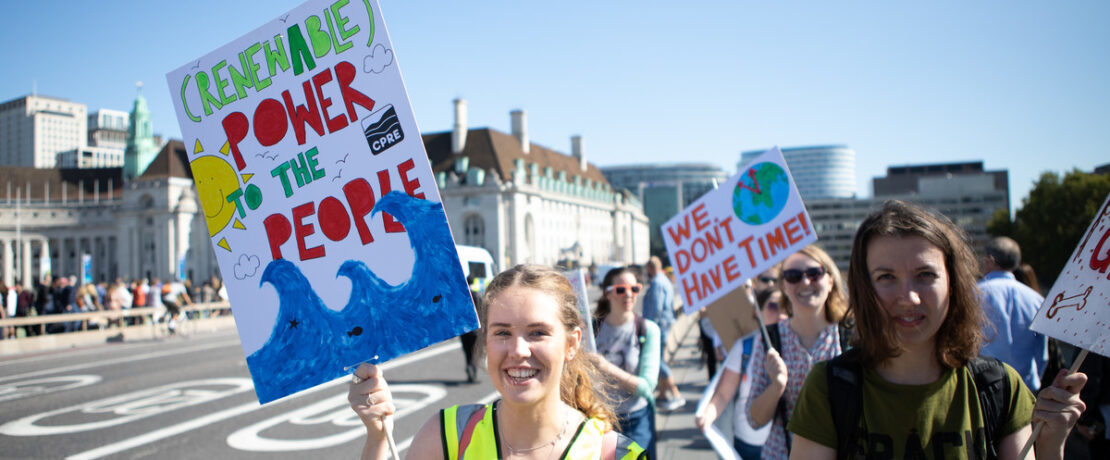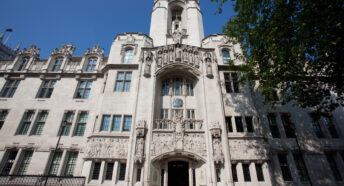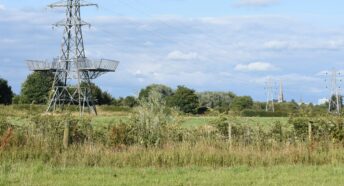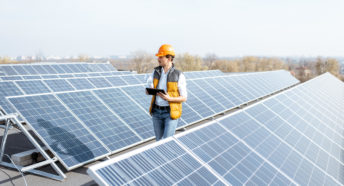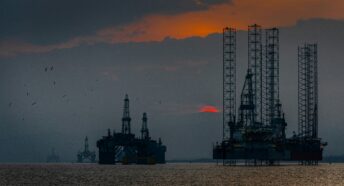It’s London Climate Action Week
London Climate Action Week, now in its sixth year, is an annual event that seeks global solutions to the climate crisis, demonstrating that the whole of society needs to engage in order to bring about positive change.
From food and farming to wildlife habitats, we know that the climate emergency is the biggest threat to our countryside and planet. Greenhouse gas emissions need to be reduced, fossil fuels need to be kept in the ground, and we need a clear route to net zero. Our policy position on the climate emergency offers a stark reminder of the risks we currently face in the UK, which include: ‘loss of quality of cropland; sea level rise affecting land and communities in coastal areas; new pests, disease and species migration posing risks to crops, livestock and trees; greater water stress affecting ecological health of lakes and rivers; degradation of peatland; increased extreme weather events that will pose increasing threats to communities, businesses, infrastructure and the natural environment.’
But there’s good news: the countryside can provide many of the solutions we so desperately seek.
Delivering a net zero UK
Looking to renewable energy sources such as wind, solar and hydro is a clear pathway to reduce greenhouse gas emissions, but often large-scale solar developments destroy productive farmland. In response, CPRE is currently campaigning for a common sense solar revolution that can be implemented in rural and urban areas alike. Roofs are a vast and largely untapped resource, and as such we are calling on the next government to set a target for 60% of solar to be on rooftops, alongside employing a ‘rooftop first’ policy that ensures productive farmland is avoided. This will not only increase the availability of clean energy, but will also protect agricultural land that holds the potential to improve food security in the UK.
Nature-based approaches hold the key
Turning to nature-based solutions is also crucial, and here we can find answers in the Green Belt. Green Belts are areas of land surrounding urban centres that are protected from most forms of development, and they are particularly effective at storing carbon and other greenhouse gases. Additionally, the expansion and restoration of wetlands, peatlands, woodland and hedgerows within the Green Belt will soak up excess water and protect urban areas from the risk of flooding and other natural disasters. Furthermore, continuing to protect this land from development will ensure that farmers can provide for local communities; with over 65% of Green Belt land registered as agricultural, there is the potential for this farmland to reduce food miles and improve food security.
Back in April, we highlighted the importance of an integrated approach for both the Green Belt and rooftop solar: ‘If we increase sustainable farming practices in the Green Belt, protect its habitats and landscapes, and unlock the potential of rooftop solar energy, we can support solutions to the climate emergency that protect our countryside and make best use of our land.’
Countryside solutions
We’re calling on the next government to truly recognise the value of our countryside in providing many of the solutions we need to tackle the environmental crises. With common sense policies on rooftop solar, and steps to protect and further enhance our Green Belt, we can embrace what our countryside has to offer for people and planet. Our vision is for a low-carbon countryside that is affordable and accessible to all, full of beautiful landscapes and filled with a diverse abundance of wildlife. If the political will is there, that vision is achievable.
